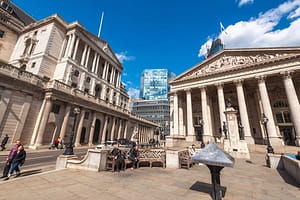Borrowing in November was more than double that of November 2021 and highest for the month since records began in 1993.
Interest on government debts stood at £7.3 billion, up £2.4 billion on same time last year.
Public sector net debt was up to 98.7% of GDP from 98.2% the previous month.
Danni Hewson, AJ Bell financial analyst, comments on the latest public sector finances: “Even in the midst of the pandemic November’s borrowing figures didn’t reach the heights they’ve reached this year. The government’s simply spending far more than it’s bringing in despite the fact the tax take has increased significantly.
“One major factor behind the rise in borrowing costs is our old adversary inflation. Interest payments on all that debt have shot up to reach another record high for the month, coming in at more than seven billion pounds, a rise of almost two and a half billion on November 2021.
“And with the price of energy at the heart of all of this, support payments and that Energy Price Guarantee scheme helped fuel the rise in day to day spend.
“As a percentage of GDP, debt has crept up once again and October’s figure has been revised upwards by a considerable margin.”
“How much extra pain the fallout from the mini-budget has heaped on government finances will be dissected in future months, but the ONS notes that market interest rates for gilts have risen and have had to be sold at a discount. Retailers fully understand the issues of having merchandise that’s lost its lustre and requires a deft hand with a red pen, but the UK government isn’t used to having its debt marked down the way it was in the autumn and will have had to sell more gilts just to make ends meet.
“It’s not a pretty picture but until the autumn borrowing had been reducing as the economy got back on its feet and with inflation thought to have reached its peak, debt interest payments should undershoot OBR forecasts in the mid-term.
“And while keeping people warm is going to continue to be a drain on Treasury coffers, energy prices have been falling and interest rates are expected to top out in the spring.
“What does it mean for the battle being waged on picket lines outside hospitals and train stations? The government says it doesn’t have the money to meet demands and clearly, it’s having to borrow extra to help those most in need. But there is still wiggle room and the next couple of days are likely to focus the minds of ministers.”






Leave a Comment